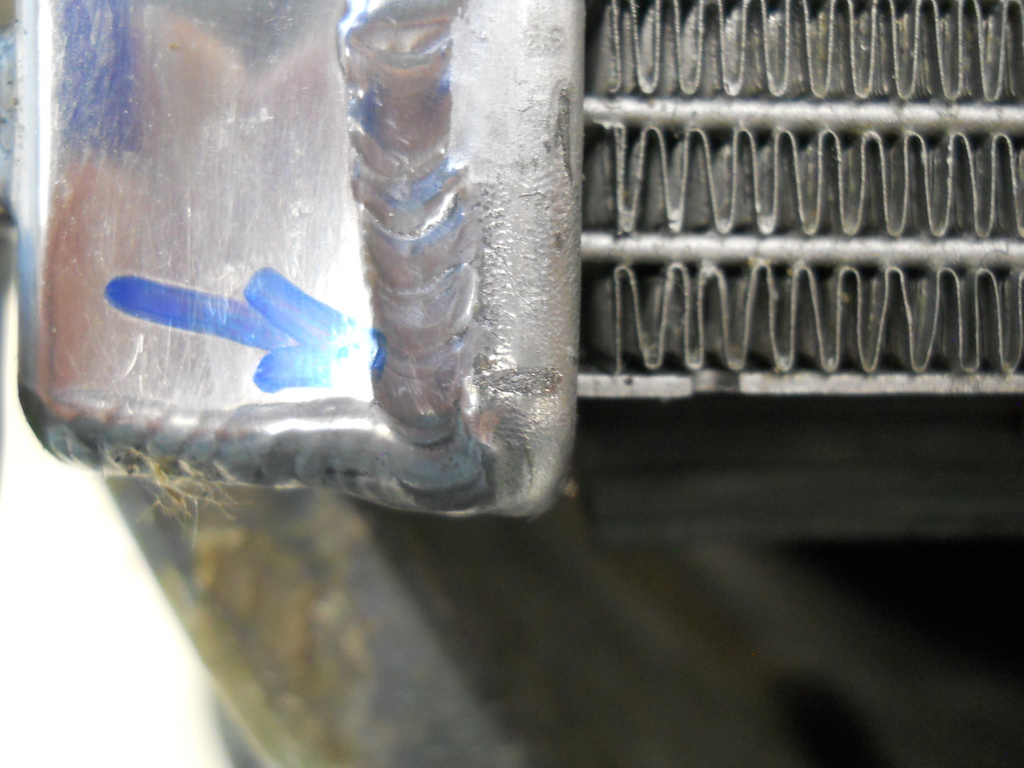After 2 years and 7000 mostly track km, at my first track event this year my air conditioning stopped working. A quick check of system pressure showed the failure was due to a leak, with the condenser being the logical first suspect. No impact damage was apparent on the face of the condenser.
Pressurizing the system with inert gas showed that the leak was small, as no leak could be heard and the pressure dropped slowly. A bit of oily residue with aluminum dust in it at the lower RH corner of the condenser had me suspecting this was the location of the leak. I removed the bumper cover, intercooler, fan shroud and radiator to get enough access to replace the condenser, but before removing it I did a soapy water test to find the leak, which was indeed where I had suspected.
The cause was rubbing between the radiator and condenser. The radiator is pretty rugged and the wear barely shows.

The condenser tubes are very fragile by comparison.

The CSF radiatorís right hand tank welds align directly with the condenserís fragile tubes producing a wear hazard.

On the left hand side, the contact is still metal-to-metal but is not on the fragile condenser tubes.

The OE radiator tanks have features that space the condenser tubes away from any chance of contact with points of abrasion.

Being plastic, the OE radiator tanks are inherently less abrasive than the CSF aluminum tanks.
